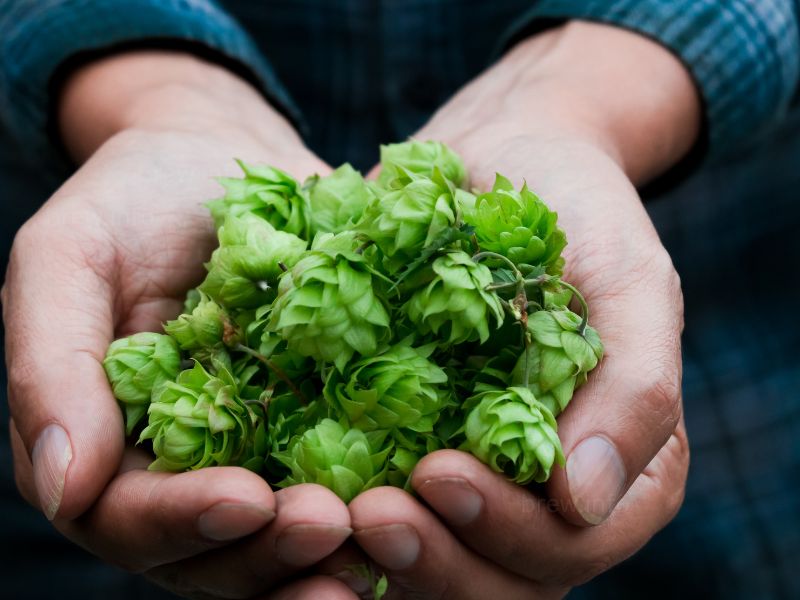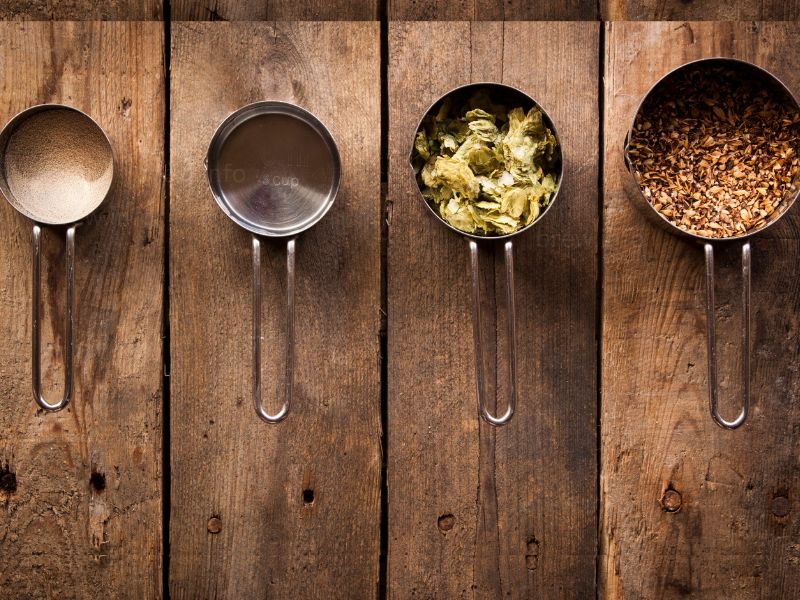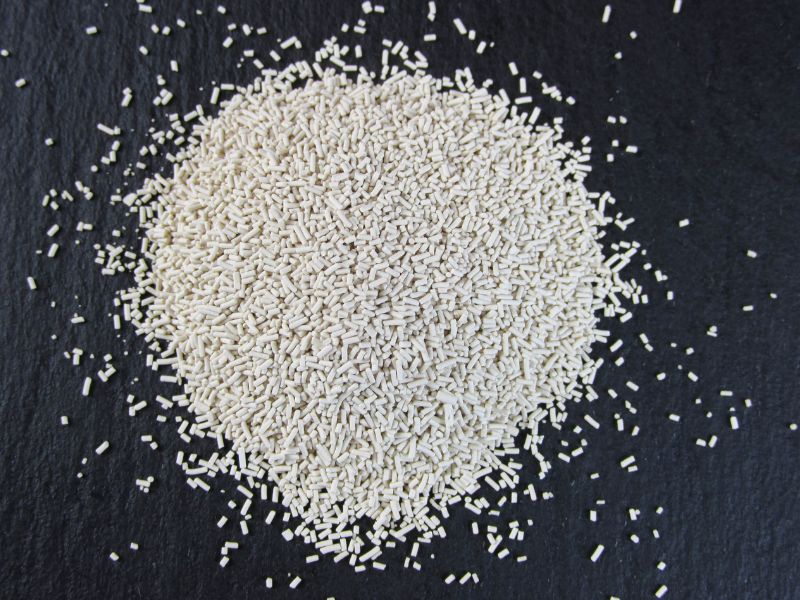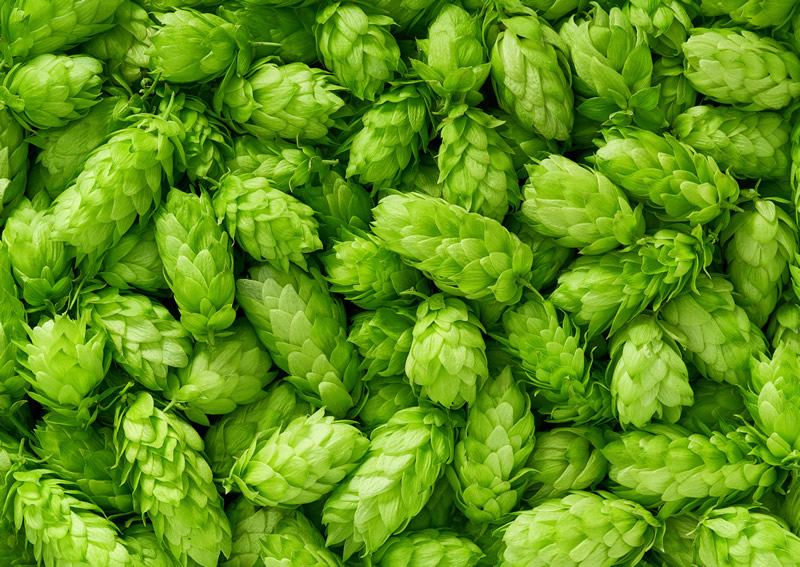My interest in the science of brewing stems from my education in microbiology and my many years of experience in homebrewing. Understanding the chemical interactions that take place during brewing has taught me how to consistently produce a beer that is both flavorful and reliable. Because of this, I’ve settled on writing this piece.
Beer is made from four basic ingredients: water, malt, hops, and yeast. The chemical processes that occur during brewing depend on each of these substances.
Water
The water used in brewing can have a significant impact on the final product. For example, the pH level and mineral content of the water can affect the solubility of the grains and hops, as well as the activity of the yeast during fermentation.
Water with a high mineral content, such as water from the Burton-upon-Trent region in England, was historically used to brew India Pale Ales (IPAs) due to the high levels of sulfates that enhanced the hop character of the beer. On the other hand, water with a low mineral content, such as the soft water from Pilsen in the Czech Republic, is ideal for brewing light lagers due to its neutral flavor profile.
In addition, the pH level of the water can also have a significant impact on the brewing process. The ideal pH range for mashing is between 5.2 and 5.6. At these pH levels, the enzymes in the malt are most active and efficiently convert the starches into simple sugars. If the pH level is too high or too low, the enzymes can become denatured, leading to an inefficient conversion and potentially impacting the flavor of the final beer.
So, as you can see, water plays a critical role in brewing and it’s important for brewers to understand the mineral content and pH level of their water in order to produce a consistent and high-quality beer. Learn more about water in brewing.
Grain
The grain used in brewing is typically barley, but other grains such as wheat, rye, and maize can also be used to create different flavor profiles in the final beer.
Barley is the most common grain used in brewing because it contains the right balance of starches and enzymes to create fermentable sugar. During the brewing process, the barley is first malted, which involves soaking the grain in water to activate the enzymes and then drying it to stop the germination process. The malted barley is then crushed to create a grist, which is mixed with hot water in the mash tun to create a sweet liquid called wort.
Different types of barley can produce different flavors in the final beer. For example, pale malts have a mild flavor and are commonly used in light-colored beers such as pilsners and blonde ales. On the other hand, caramel and crystal malts have a sweeter, more caramel-like flavor and are used in darker beers such as brown ales and stouts.
In addition to barley, other grains can be used in brewing to add different flavors and textures to the beer. For example, wheat is commonly used in wheat beers such as Hefeweizens and Belgian witbiers. Rye is used in rye beers to add a spicy flavor and a drier texture. Maize is used in some American-style lagers to add a neutral flavor and a lighter color.
So, as you can see, the type of grain used in brewing can have a significant impact on the final flavor and texture of the beer. By understanding the characteristics of different grains, brewers can create unique and flavorful beers that stand out from the crowd. Here are some details all about the grains used in brewing.
Hops
Hops are a critical ingredient in brewing and they play a dual role in creating the final flavor and aroma of the beer. Hops provide bitterness to balance out the sweetness of the malt, and they also add aroma and flavor to the beer.
Different hop varieties have different flavor profiles and can be used to create unique and distinctive beers. For example, Cascade hops are a popular American hop variety that is known for their citrusy and floral aromas and are commonly used in pale ales and IPAs. On the other hand, East Kent Goldings are a traditional English hop variety that has an earthy and spicy flavor and is commonly used in English-style ales.
The timing of hop addition during the brewing process can also have a significant impact on the final beer. Early hop additions during the boil will contribute to the beer’s bitterness, while later additions will contribute more to the beer’s aroma and flavor. Dry hopping, where hops are added to the fermenting beer, is a popular technique used by craft brewers to increase the hop aroma in the final beer.
So, as you can see, hops play a critical role in brewing and by understanding the characteristics of different hop varieties and the timing of hop addition, brewers can create unique and flavorful beers that are balanced and delicious. There are a ton of different hops to learn about.

Yeast
Yeast is a critical ingredient in brewing and it is responsible for converting the sugar from the malt into alcohol and carbon dioxide through a process called fermentation. Different yeast strains will produce different flavors, aromas, and alcohol levels in the final beer.
For example, Saccharomyces cerevisiae is a commonly used yeast strain in brewing and it is known for producing a clean and neutral flavor in the final beer. This yeast strain is commonly used in lagers and ales.
On the other hand, Brettanomyces yeast strains are known for producing funky and sour flavors in the final beer. These yeast strains are commonly used in Belgian-style sour ales and wild ales.
In addition, yeast can also play a role in determining the alcohol content of the final beer. For example, yeast strains with a high alcohol tolerance, such as the strains used in Belgian Tripels and Quadruples, can ferment a higher percentage of sugar, resulting in a higher alcohol content in the final beer.
So, as you can see, yeast plays a critical role in brewing and by understanding the characteristics of different yeast strains, brewers can create unique and flavorful beers with a wide range of alcohol levels and flavor profiles. The army that makes your brew is diverse.
In Conclusion
Yeast, in the end, is the true hero of the brewing process. Through a process called fermentation, it transforms the sugar in the malt into alcohol and carbon dioxide. Beers fermented with various yeast strains will have very unique scents, tastes, and alcohol content.
Brewing, to sum it up, is a complicated process entailing many different chemical processes. Each stage of the brewing process, from the chemistry of the water to the conversion of the grain to the yeast fermentation, is essential to the production of a high-quality beer. I hope this article has been helpful in explaining the science of brewing to those who aren’t as familiar with the topic as I am. Think of it as a primer to start your adventure into the science of brewing.
© 2011-2023 by Brew.info. All rights reserved. No part of this document may be reproduced or transmitted in any form or by any means, electronic, mechanical, photocopying, recording, or otherwise, without prior written permission of Brew.info.action of brewing your own delicious beer is well worth the effort. So grab a brew kettle, and some malted barley, and start brewing! Cheers!







